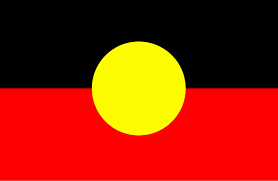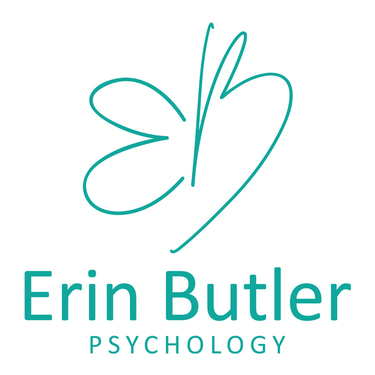

Anxiety
What is anxiety?
Anxiety is a normal feeling that everyone experiences from time to time. It's like a built-in alarm system in our bodies that helps us stay alert and safe in challenging situations. However, when anxiety becomes too intense or lasts a long time, it can turn into a problem. Imagine feeling worried or scared even when there's no immediate danger. That's what anxiety can be like. It can cause physical symptoms like a fast heartbeat, sweaty palms, and a tight chest. It can also make you overthink and worry a lot about things that might not happen. The good news is that there are ways to manage anxiety, such as deep breathing, relaxation techniques, and talking to someone you trust about your feelings.


Symptoms of anxiety
Anxiety can manifest in a variety of physical, emotional, and behavioral symptoms. It's important to note that not everyone with anxiety will experience all of these symptoms, and the severity and frequency of symptoms can vary. Common symptoms of anxiety include:
Excessive Worry: Persistent and excessive worrying about various aspects of life, including everyday events, future outcomes, and potential problems.
Restlessness: Feeling on edge, restless, or keyed up, making it challenging to relax.
Muscle Tension: Experiencing muscle tension, often leading to physical discomfort or headaches.
Fatigue: Feeling unusually tired or fatigued, even when not physically active.
Irritability: Becoming easily irritated, agitated, or impatient.
Difficulty Concentrating: Struggling to focus or concentrate on tasks due to racing thoughts and worry.
Sleep Problems: Having difficulty falling asleep, staying asleep, or experiencing restless, interrupted sleep.
Physical Symptoms: Experiencing physical symptoms such as a racing heart (palpitations), sweating, trembling, dizziness, shortness of breath, and stomach discomfort.
Avoidance Behavior: Avoiding situations or places that trigger anxiety, which can lead to social isolation or limitations in daily activities.
Perfectionism: Setting unrealistically high standards for oneself and worrying about making mistakes.
Catastrophic Thinking: Expecting the worst-case scenario in various situations.
Excessive Self-Consciousness: Feeling overly self-conscious in social situations, leading to fear of embarrassment or judgment.
Panic Attacks: Sudden, intense episodes of fear or discomfort, often accompanied by physical symptoms such as a racing heart, sweating, trembling, and a sense of impending doom.
Obsessions and Compulsions: In cases of obsessive-compulsive disorder (OCD), experiencing distressing and intrusive thoughts (obsessions) and engaging in repetitive behaviors or mental rituals (compulsions) to alleviate anxiety.


Types of anxiety
There are several different types of anxiety disorders, each characterized by specific symptoms and triggers. Here are some of the most common types of anxiety disorders:
Generalized Anxiety Disorder (GAD): People with GAD experience excessive worry and anxiety about everyday life events and situations, often without a specific cause. This chronic worry can interfere with daily functioning.
Social Anxiety Disorder (Social Phobia): Social anxiety disorder involves an intense fear of social or performance situations where the person believes they may be scrutinized or judged by others. This fear can lead to avoidance of social interactions.
Panic Disorder: Individuals with panic disorder have recurrent and unexpected panic attacks—intense periods of extreme fear or discomfort accompanied by physical symptoms like a racing heart, sweating, and shortness of breath. Fear of having another panic attack can lead to avoidance behaviors.
Specific Phobias: Specific phobias are intense and irrational fears of specific objects or situations, such as heights, spiders, flying, or needles. Exposure to the phobic stimulus can trigger intense anxiety.
Obsessive-Compulsive Disorder (OCD): OCD is characterized by persistent, distressing, and intrusive thoughts (obsessions) and repetitive behaviors or mental rituals (compulsions) that are performed to reduce anxiety. Common obsessions include fears of contamination, and compulsions can involve excessive handwashing or checking.
Post-Traumatic Stress Disorder (PTSD): PTSD occurs after exposure to a traumatic event, and it involves symptoms like flashbacks, nightmares, hypervigilance, and emotional numbness. It can significantly impact a person's life and well-being.
Separation Anxiety Disorder: Typically seen in children, separation anxiety disorder involves excessive fear or distress when separated from attachment figures, like parents or caregivers.
Agoraphobia: Agoraphobia involves a fear of being in situations or places from which escape might be difficult or embarrassing if a panic attack or intense anxiety were to occur. This fear often leads to avoidance of crowded places, public transportation, or open spaces.
Selective Mutism: This anxiety disorder affects children who consistently fail to speak in specific social situations, despite speaking comfortably in other settings, such as at home.
Substance-Induced Anxiety Disorder: Anxiety symptoms can be caused or worsened by substance use or withdrawal from substances like drugs, alcohol, or medications.


Treatment for anxiety
The treatment of anxiety disorders typically involves a combination of therapeutic approaches and, in some cases, medication. The choice of treatment depends on the specific type and severity of the anxiety disorder. Here are common treatment options:
Psychotherapy (Talk Therapy):
Cognitive-Behavioral Therapy (CBT): CBT is a widely used approach that helps individuals identify and change negative thought patterns and behaviors associated with anxiety. It teaches coping strategies and problem-solving skills.
Exposure Therapy: Exposure therapy is effective for specific phobias and OCD. It involves gradually exposing individuals to their fears or triggers in a controlled and safe manner to reduce anxiety over time.
Other Therapies: Depending on the individual and the disorder, other therapies such as interpersonal therapy (IPT), dialectical behavior therapy (DBT), or acceptance and commitment therapy (ACT) may also be beneficial.
Medication:
Antidepressants: Medications like selective serotonin reuptake inhibitors (SSRIs) and serotonin-norepinephrine reuptake inhibitors (SNRIs) are often prescribed to help regulate mood and reduce anxiety symptoms.
Benzodiazepines: These are sometimes used for short-term relief of severe anxiety symptoms. However, they can be habit-forming and are generally prescribed cautiously.
Other Medications: In some cases, atypical antipsychotics, beta-blockers, or anti-anxiety medications may be prescribed, depending on the specific anxiety disorder.
Lifestyle Changes:
Regular Exercise: Physical activity can help reduce anxiety and improve overall well-being.
Balanced Diet: Eating a nutritious diet can positively impact mental health.
Sleep Hygiene: Establishing healthy sleep habits can alleviate sleep-related anxiety.
Stress Management: Learning stress-reduction techniques, such as mindfulness, relaxation exercises, or yoga, can be helpful.
Self-Help Strategies:
Self-help books, mobile apps, and online resources can provide information and tools for managing anxiety.
Support Groups: Joining support groups can offer a sense of community and understanding among people with similar experiences.
Complementary and Alternative Therapies:
Some individuals find relief through practices like acupuncture, meditation, or herbal supplements. It's important to discuss these options with a healthcare provider.
Therapeutic Lifestyle Changes (TLC):
This holistic approach focuses on improving overall well-being through diet, exercise, social support, and stress management.
Call
Address
Level 1, 5 George St, North Strathfield NSW 2137
0410 590 067
erinbutlerpsychology@gmail.com
Erin Butler Psychology acknowledges the Traditional Custodians of country throughout Australia and their connections to land, sea and community. We pay our respect to their Elders past and present and extend that respect to all Aboriginal and Torres Strait Islander peoples today.
Erin Butler Psychology acknowledges and respects everyone’s right to freely identify and affirm their sexual or romantic orientation and gender identity. We welcome all people from all walks of life.





